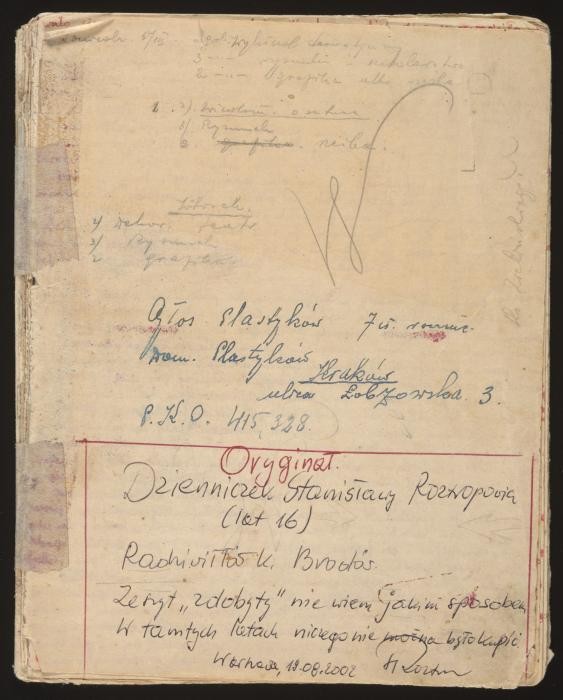
Stanislava Roztropowicz kept a diary from 1943-1944. In it, she describes her family's decision to hide an abandoned Jewish girl, Sabina Heller (Kagan).
Sabina Kagan was an infant when SS mobile killing squads began rounding up Jews in her Polish village of Radziwillow in 1942. Her parents persuaded a local policeman to hide the family. The policeman, however, soon asked the Kagans to leave but agreed to hide baby Sabina. Her parents were captured and killed. Sabina was concealed in a dark basement, with minimal food and clothing. She was discovered and taken in by the Roztropowicz family in 1943.
This is the front cover of the diary kept by Stanislava, one of Sabina's rescuers. Stanislava recorded events of the war, updates on the eldest Roztropowicz child who was in forced labor, and the progress of Sabina, whom the family decided to call "Inka."
How do diaries enhance our understanding of the events of the Holocaust?
What other source materials might be helpful to provide more historical context for this diary?
Why were children especially vulnerable to Nazi persecution?
What risks, pressures, and motivations confronted rescuers when they tried to help children?
We would like to thank Crown Family Philanthropies, Abe and Ida Cooper Foundation, the Claims Conference, EVZ, and BMF for supporting the ongoing work to create content and resources for the Holocaust Encyclopedia. View the list of donor acknowledgement.